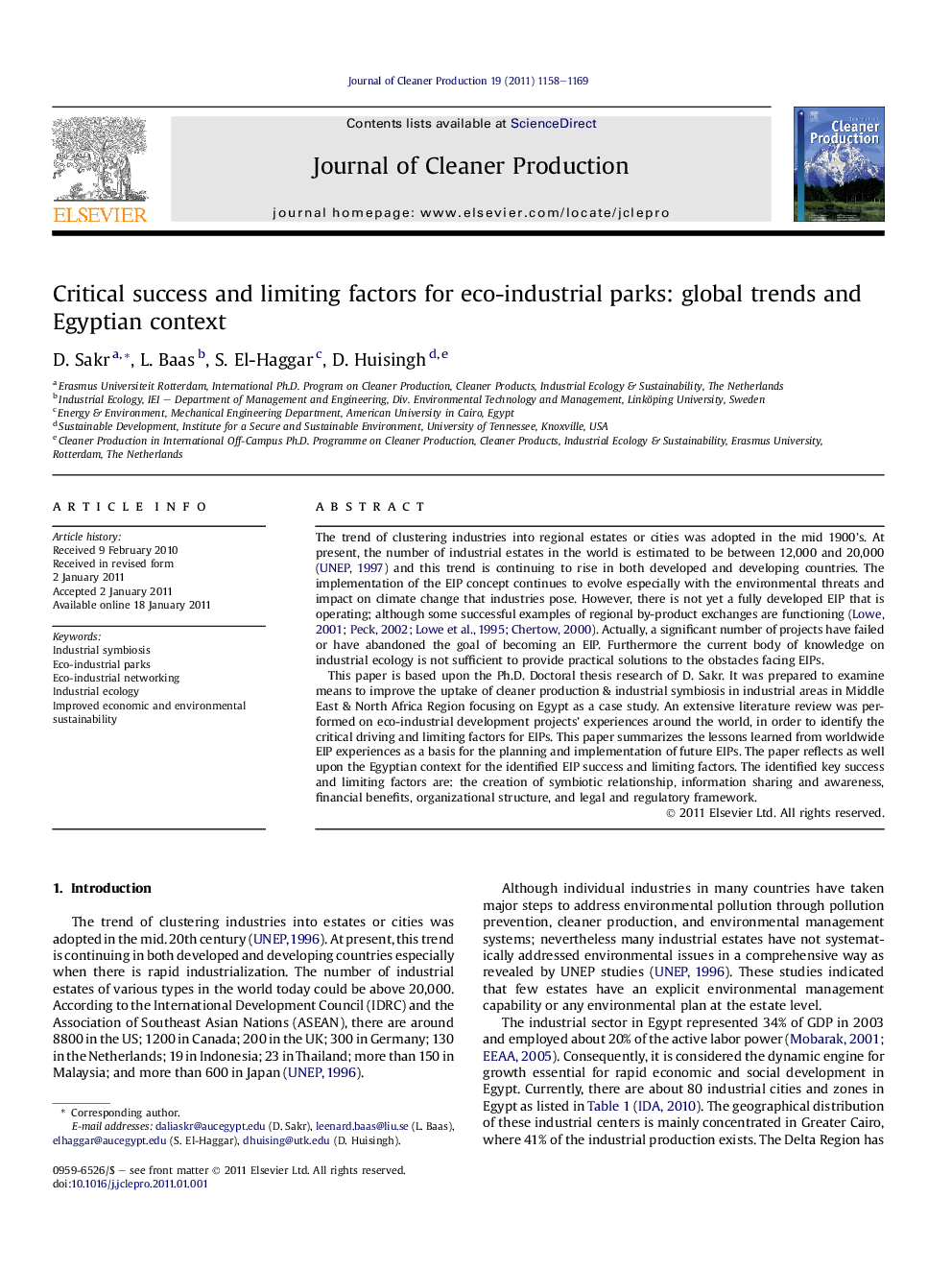| کد مقاله | کد نشریه | سال انتشار | مقاله انگلیسی | نسخه تمام متن |
|---|---|---|---|---|
| 1745947 | 1018071 | 2011 | 12 صفحه PDF | دانلود رایگان |

The trend of clustering industries into regional estates or cities was adopted in the mid 1900’s. At present, the number of industrial estates in the world is estimated to be between 12,000 and 20,000 (UNEP, 1997) and this trend is continuing to rise in both developed and developing countries. The implementation of the EIP concept continues to evolve especially with the environmental threats and impact on climate change that industries pose. However, there is not yet a fully developed EIP that is operating; although some successful examples of regional by-product exchanges are functioning (Lowe, 2001, Peck, 2002, Lowe et al., 1995 and Chertow, 2000). Actually, a significant number of projects have failed or have abandoned the goal of becoming an EIP. Furthermore the current body of knowledge on industrial ecology is not sufficient to provide practical solutions to the obstacles facing EIPs.This paper is based upon the Ph.D. Doctoral thesis research of D. Sakr. It was prepared to examine means to improve the uptake of cleaner production & industrial symbiosis in industrial areas in Middle East & North Africa Region focusing on Egypt as a case study. An extensive literature review was performed on eco-industrial development projects’ experiences around the world, in order to identify the critical driving and limiting factors for EIPs. This paper summarizes the lessons learned from worldwide EIP experiences as a basis for the planning and implementation of future EIPs. The paper reflects as well upon the Egyptian context for the identified EIP success and limiting factors. The identified key success and limiting factors are: the creation of symbiotic relationship, information sharing and awareness, financial benefits, organizational structure, and legal and regulatory framework.
Journal: Journal of Cleaner Production - Volume 19, Issue 11, July 2011, Pages 1158–1169